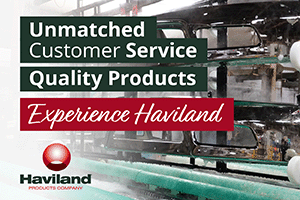The U.S. Environmental Protection Agency is proposing a ban on most uses of methylene chloride, a product used in some paint removal processes and cleaning.
Methylene chloride is the second chemical to undergo risk management under the reformed process created by the 2016 Frank R. Lautenberg Chemical Safety for the 21st Century Act, following agency proposed actions to protect people from asbestos exposure last year.
But the EPA will allow the products continued use by the National Aeronautics and Space Administration, the Department of Defense, and the Federal Aviation Administration in certain situations.
“The science on methylene chloride is clear, exposure can lead to severe health impacts and even death, a reality for far too many families who have lost loved ones due to acute poisoning,” says Michael S. Regan, EPA Administrator. “This historic proposed ban demonstrates significant progress in our work to implement new chemical safety protections and take long-overdue actions to better protect public health.”
The EPA says that since 1980 at least 85 people have died from acute exposure to methylene chloride, largely workers engaged in home renovation contracting work and even, in some cases, while fully trained and equipped with personal protective equipment. The agency says many more have experienced severe and long-lasting health impacts, including certain cancers.
“Still, use of methylene chloride has remained widespread, even after EPA banned one consumer use in 2019,” the EPA says.
Methylene chloride is used in a variety of ways including consumer uses such as aerosol degreasers and brush cleaners for paints and coatings, commercial applications such as adhesives and sealants, and in industrial settings for making other chemicals. For example, the EPA says methylene chloride is used as a chemical intermediate in the production of hydrofluorocarbon (HFC) 32, which is used in refrigerant blends developed to replace substances with higher global warming potential.
EPA’s unreasonable risk determination for methylene chloride was driven by risks associated with workers, occupational non-users (workers nearby but not in direct contact with this chemical), consumers and those in close proximity to a consumer use. EPA identified risks for adverse human health effects, including neurotoxicity, liver effects, and cancer from inhalation and dermal exposures to methylene chloride.
EPA’s proposed risk management rule would rapidly phase down manufacturing, processing and distribution of methylene chloride for all consumer uses and most industrial and commercial uses, most of which would be fully implemented in 15 months. For most of the uses of methylene chloride that EPA is proposing to prohibit, EPA’s analysis found that alternative products with similar costs and efficacy to methylene chloride products are generally available.
For the industrial manufacturing, industrial processing, and federal uses that EPA is not proposing to prohibit, EPA is proposing a workplace chemical protection program with strict exposure limits to better protect workers. EPA says it has received data from industry that indicate some facilities may already be meeting the stronger proposed methylene chloride exposure limits. These proposed requirements would allow the continued processing of methylene chloride to produce chemicals that are important in efforts to reduce global warming outlined in the American Innovation and Manufacturing Act. Climate-friendly refrigerants and other chemicals play a significant role in combatting climate change and EPA’s proposed rule supports continued efforts to reduce emissions.
Similarly, EPA is also proposing that specific uses of methylene chloride required by the National Aeronautics and Space Administration, the Department of Defense, and the Federal Aviation Administration could continue with strict workplace controls because sufficient reductions in exposure are possible in these highly sophisticated environments, thereby minimizing risks to workers.
The proposed prohibitions and restrictions would also protect communities from methylene chloride exposure. EPA identified potential risks to fenceline communities from a small number of facilities using six years of Toxics Release Inventory exposure data. The prohibitions in EPA’s proposed rule would cover ongoing uses of methylene chloride at a majority of these facilities, effectively eliminating the potential risks to the neighboring communities.
EPA consulted with the Occupational Safety and Health Administration (OSHA) while developing this proposed rule and was mindful of existing OSHA requirements in building out the proposed worker protections. EPA’s proposed risk-based limits are based on recent data and meet the TSCA requirement to eliminate the unreasonable risk. Employers would have one year after the finalization of the risk management rule to comply with the worker chemical protection plan and would be required to periodically monitor their workplace to ensure that workers are not being exposed to levels of methylene chloride that would lead to an unreasonable risk.
EPA encourages members of the public to read and comment on the proposed rule. EPA is especially interested in hearing perspective on the feasibility and efficacy of the proposed requirement for worker protections from entities that would be required to implement the proposed program. In the coming weeks, EPA will host a public webinar targeted to employers and workers, but useful for anyone looking for an overview of the proposed regulatory action to discuss the proposed program. The date, time and registration information will be announced soon.
EPA will accept public comments on the proposed rule for methylene chloride for 60 days following publication in the Federal Register via docket EPA-HQ-OPPT-2020-0465 at www.regulations.gov.



































